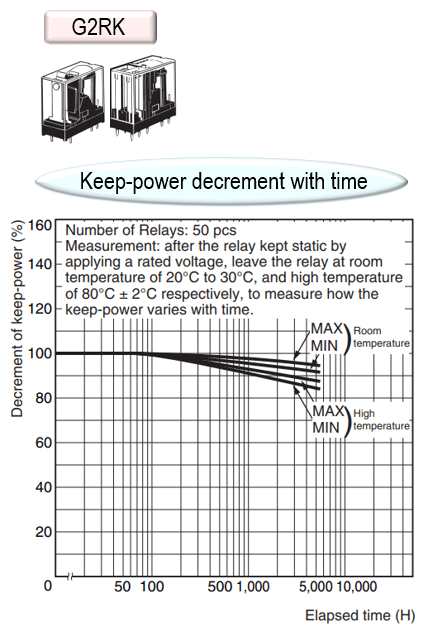How long can a latching relay keep coercivity?
ID: FAQE10049E
update:
Answer
The holding force (coercive force) of a latching relay may decrease over time, and the set state may be released due to a decrease in the holding force. The decay rate with respect to the elapsed time depends on the surrounding environment.
Refer to “Attenuation of holding force” data.
Explanation
Attenuation of holding force of latching relay over time
The holding force (coercive force) of a magnetic latching relay may decrease over time when it is used for a long time under the set state, and the set state may be released due to a decrease in the holding force.
This is also a property of semi-hard magnetic materials, and the decay rate with respect to the elapsed time depends on the surrounding environment (temperature, humidity, vibration, and external magnetic field).
Perform maintenance at least once a year (reset once and apply the rated voltage again to set).
Example of holding force attenuation of latching relay over time
The attenuation data of the holding force of G2RK is shown below. The holding force is measured while it is set (kept) at room temperature and left at room temperature and high temperature of 80°C. Under these conditions, the holding force begins to decrease after being left for about 100 hours at both room temperature and high temperature.
When left at room temperature for more than 100 hours, the attenuation of the holding force is smaller than when left at high temperature. However, the time when the attenuation starts is a guide.

For more information, see Safty Precautions for All Relays: 2-2 Circuit Design/Input Circuits.
Quick tips
If a latching relay is used in a set (kept) state for a long period of time, the holding force will be attenuated and the set may come off due to vibration or impact. Please consider using it in a reset state.
| Product category | Relays Signal Relays Power Relays |
|---|---|
| Classification | Usage, Applications |
| Related keywords |
|